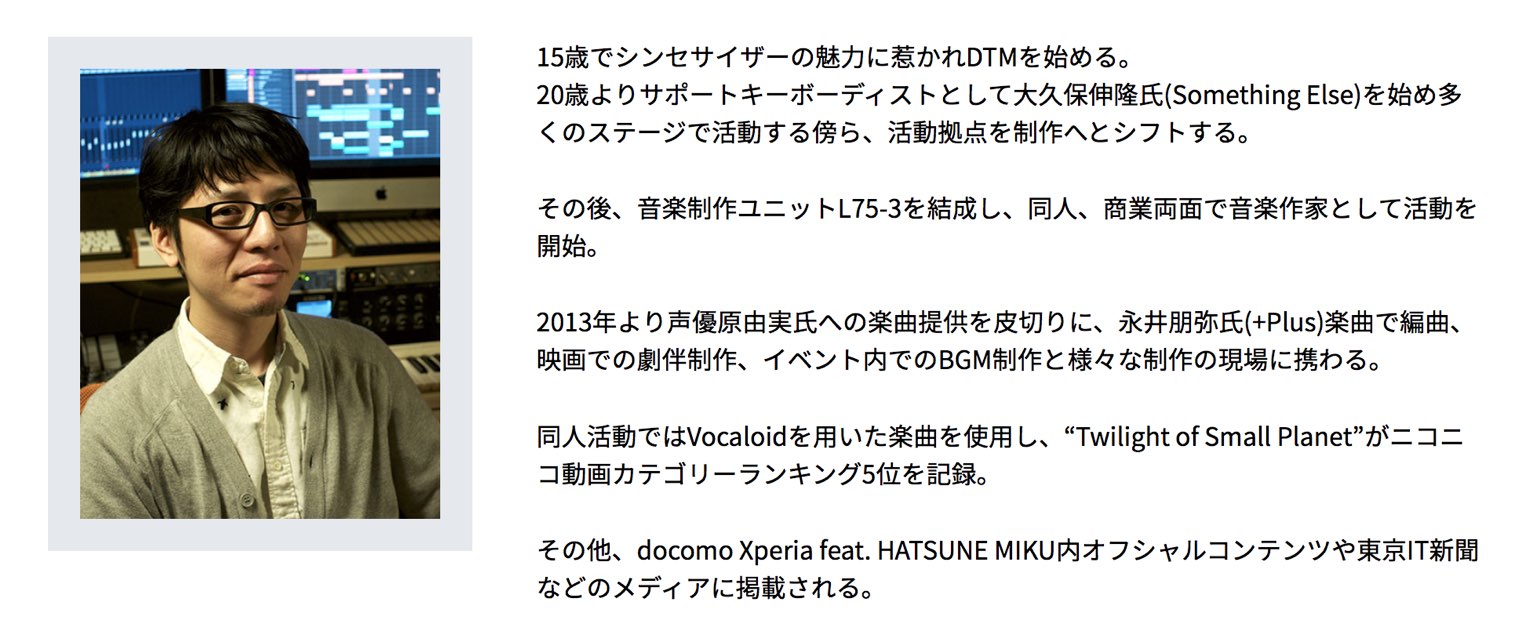ARTURIA PIGMENTSの使い方 製品の特徴と各セクションのサウンドコントロール
至れり尽くせりなシンセエディット機能が満載
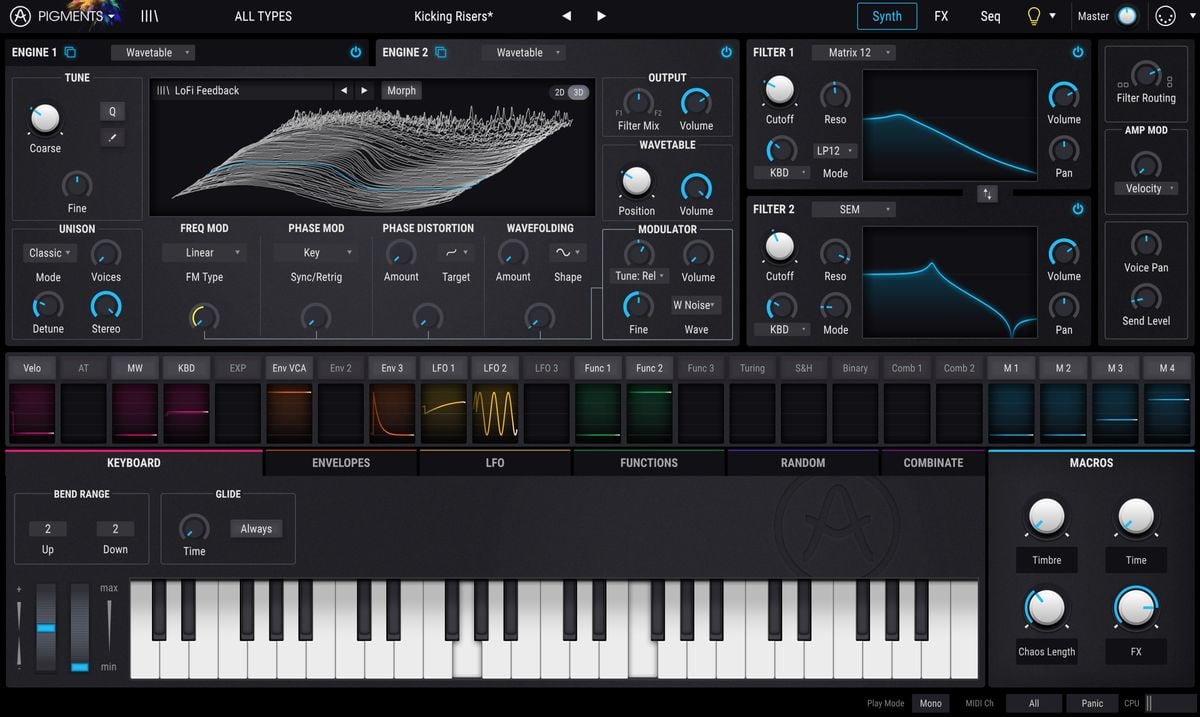
今回はArturia社からリリースされたシンセサイザー「PIGMENTS」の解説を行なっていきます。
PIGMENTSにはサウンドを柔軟にコントロールするための「ウェーブテーブルに対応したオシレーター」「多種多様なフィルター」「自由なモジュレーションソース」などが用意されています。
これに加えて、製品の内部でフレーズを作成する「シーケンサー」「アルペジエーター」を搭載し、エフェクトセクションでは「6つのインサート」「3つのセンド」計9つのエフェクトを適用することがでます。
まずはPIGMENTSを使用して作成したデモソングをご視聴ください。
楽曲に登場するシンセトラックは全てPIGMENTSで作成しています。
ARTURIA PIGMENTS 製品動画
PIGMENTSプレゼントキャンペーンについて
ウェーブテーブルに対応したオシレーターセクション
まずはオシレーターセクションを確認していきましょう。
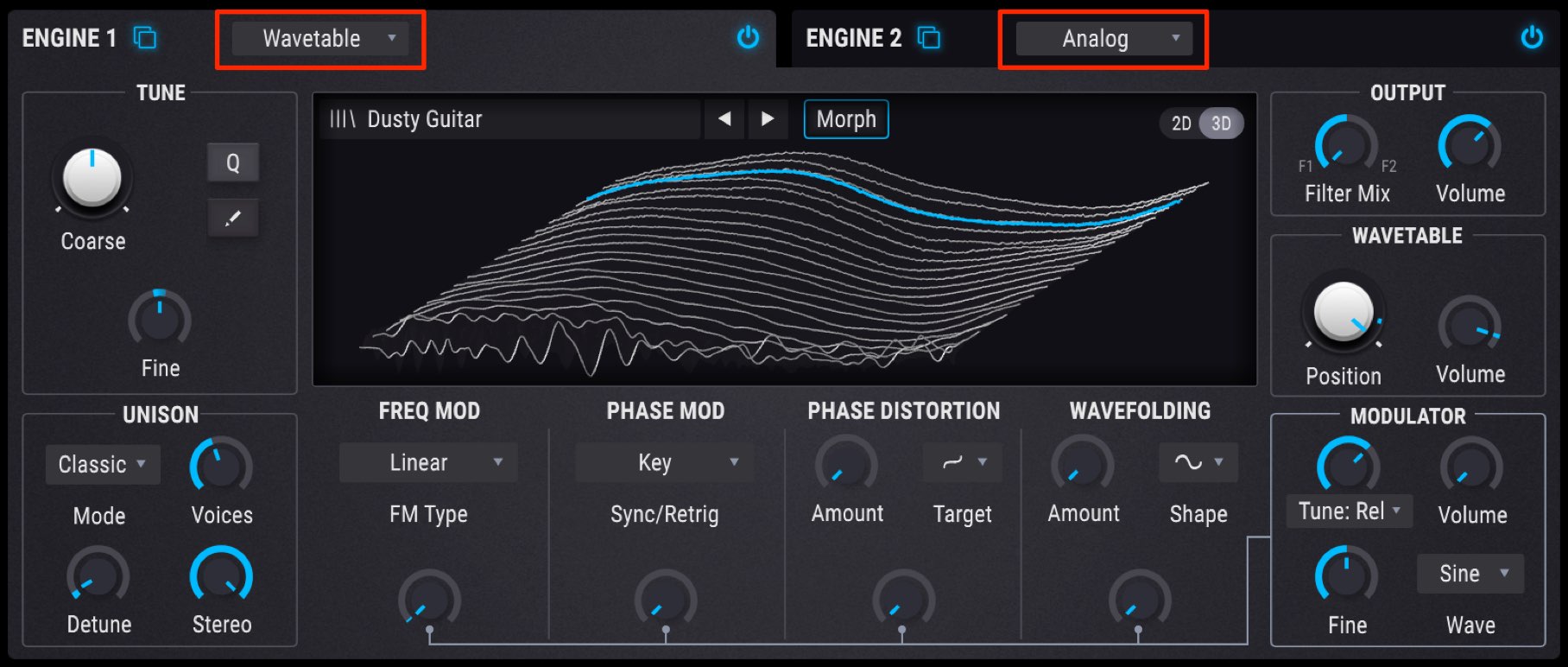
2機のオシレーターは、近年流行となっているウェーブテーブル方式と、クラシックなアナログ方式を選択可能です。

ウェーブテーブルは予め用意された豊富な波形データをロードすることができ、
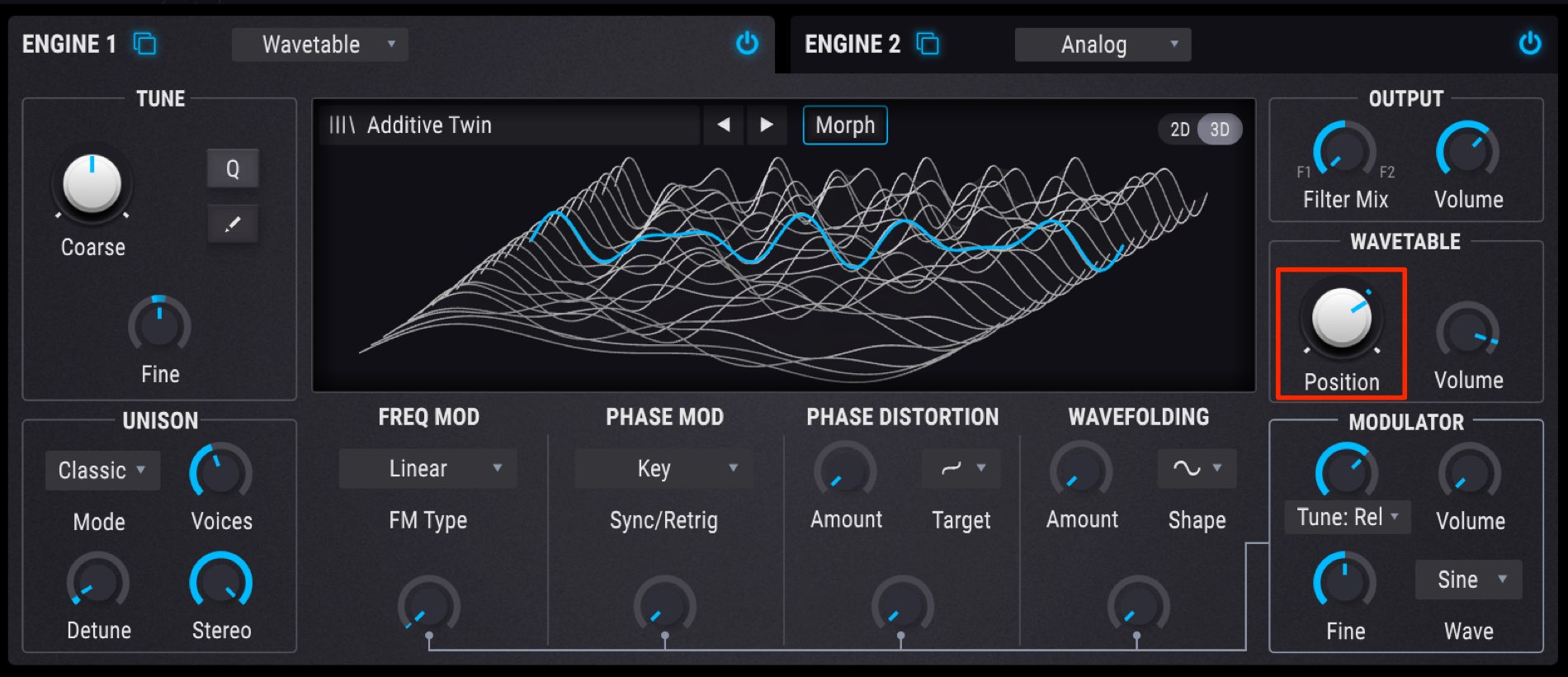
「Position」から再生する部分を指定します。
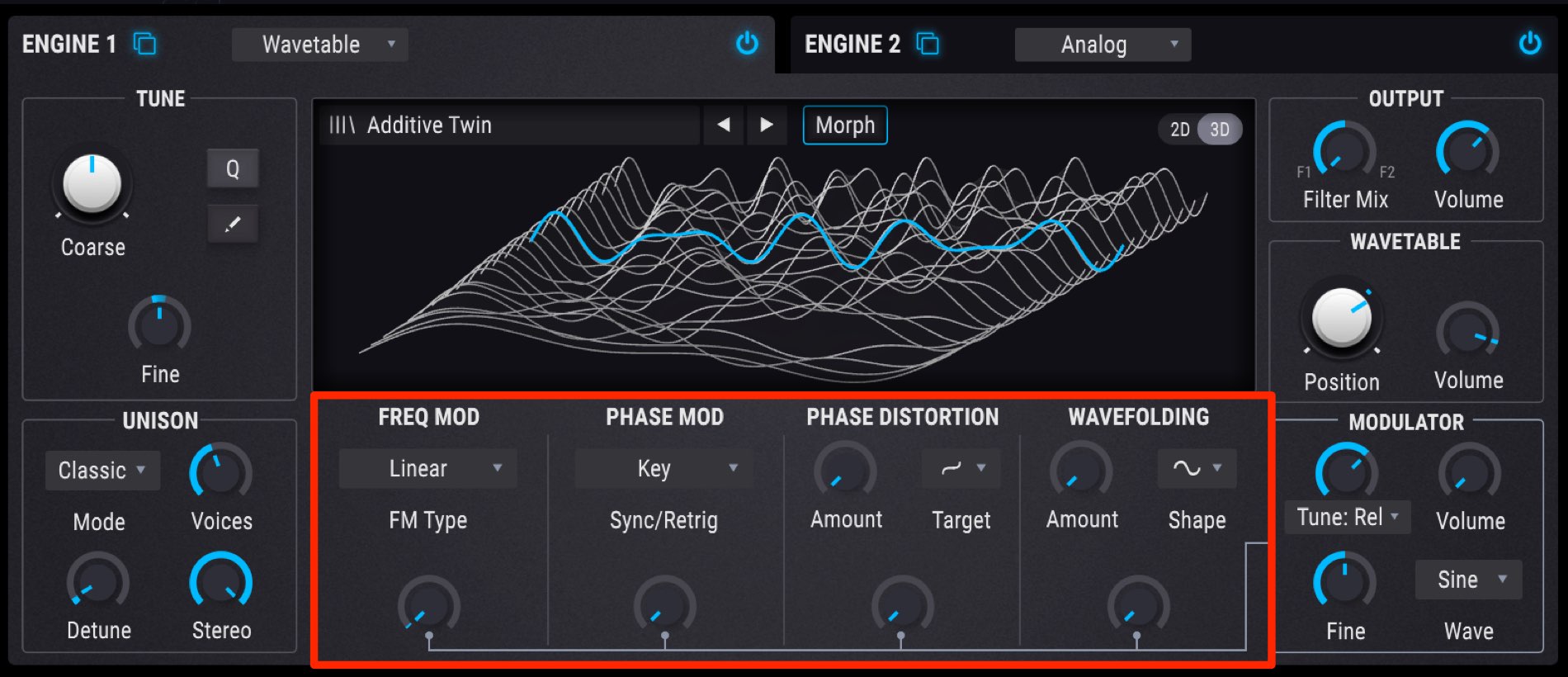
読み込んだ波形に対して、「FM」「PHASE」「PHASE DISTORTION」「WAVEFOLDING」といった近年のサウンドメイキングに欠かすことができないモジュレーションが用意されています。
これにより、サウンドに派手で複雑な倍音を加えることが可能です。
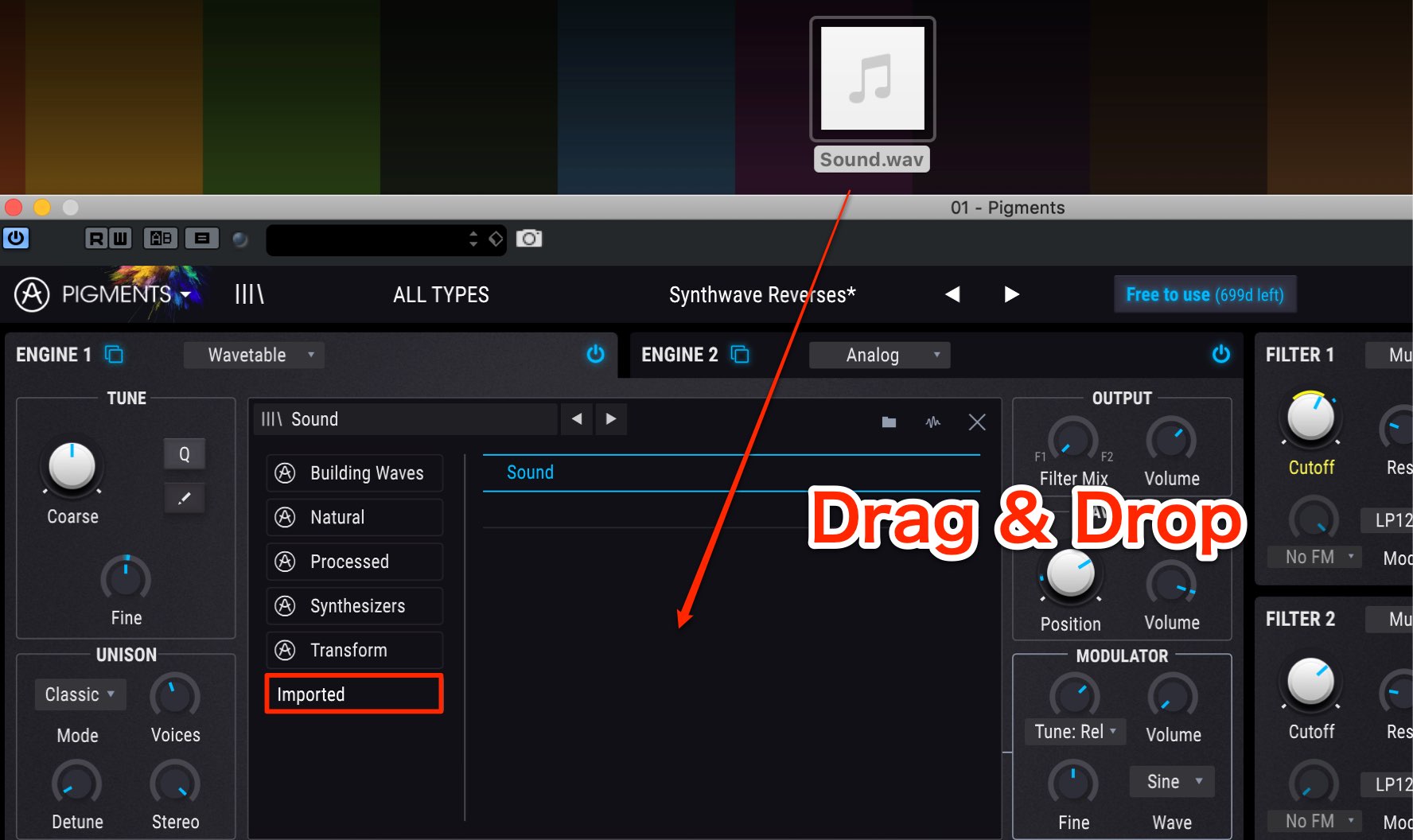
オシレーターに独自のテーブルデータを読み込むことも可能です。
「Imported」を選択したのち、目的のWavファイルをインポートするだけです。
次にアナログ方式のオシレーターを確認していきましょう。
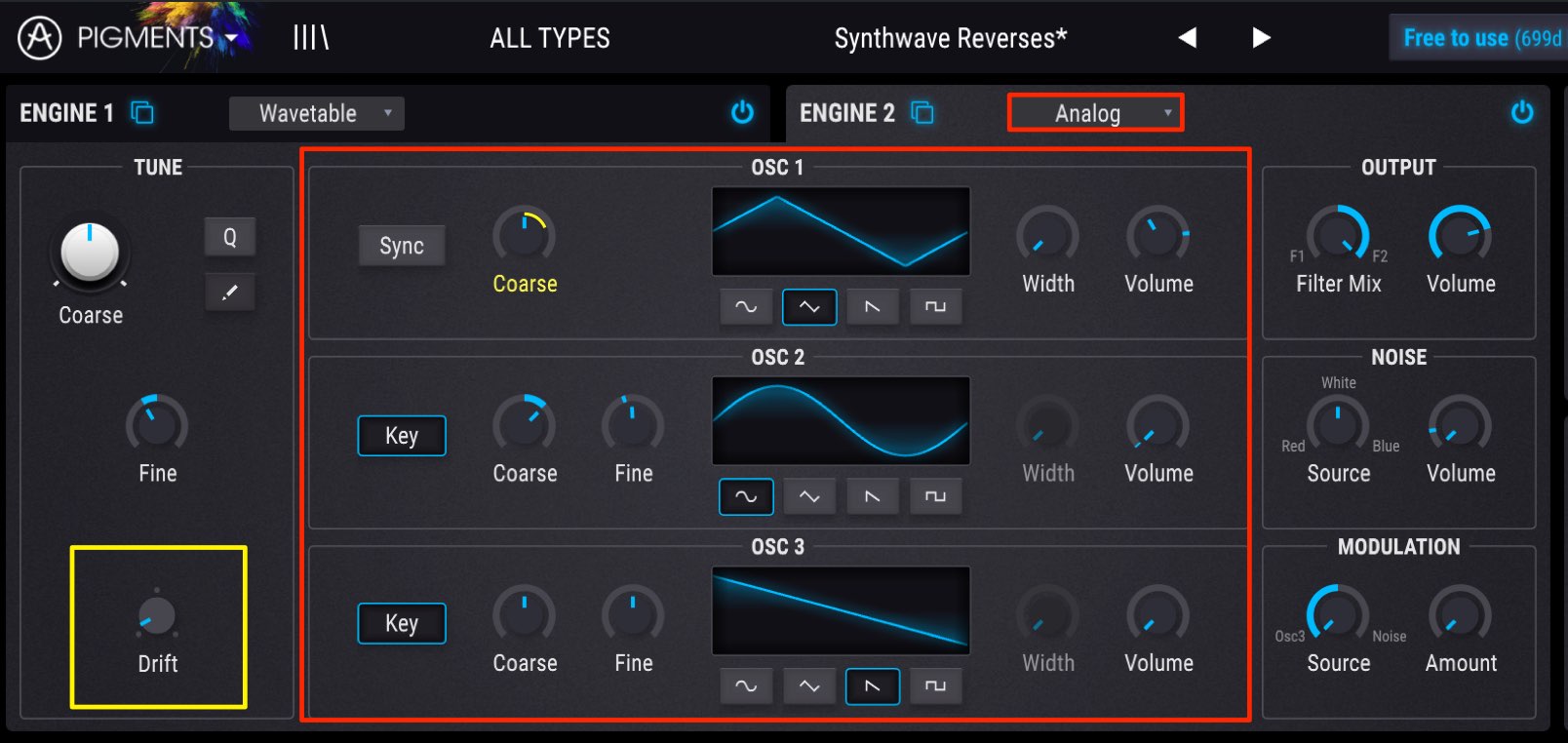
Analogモードでは最大3つの波形を重ねることができます。
特徴的な項目として「Drift」が備わっており、アナログシンセ特有のピッチの揺らぎを再現し、太く温かみのあるサウンドを得ることができます。
ビジュアル化されたモジュレーション
PIGMENTSの優れている点として挙げられるのが、エンベロープ/LFOなどのモジュレーション割り当て、値の変化が視覚的に確認できるということです。
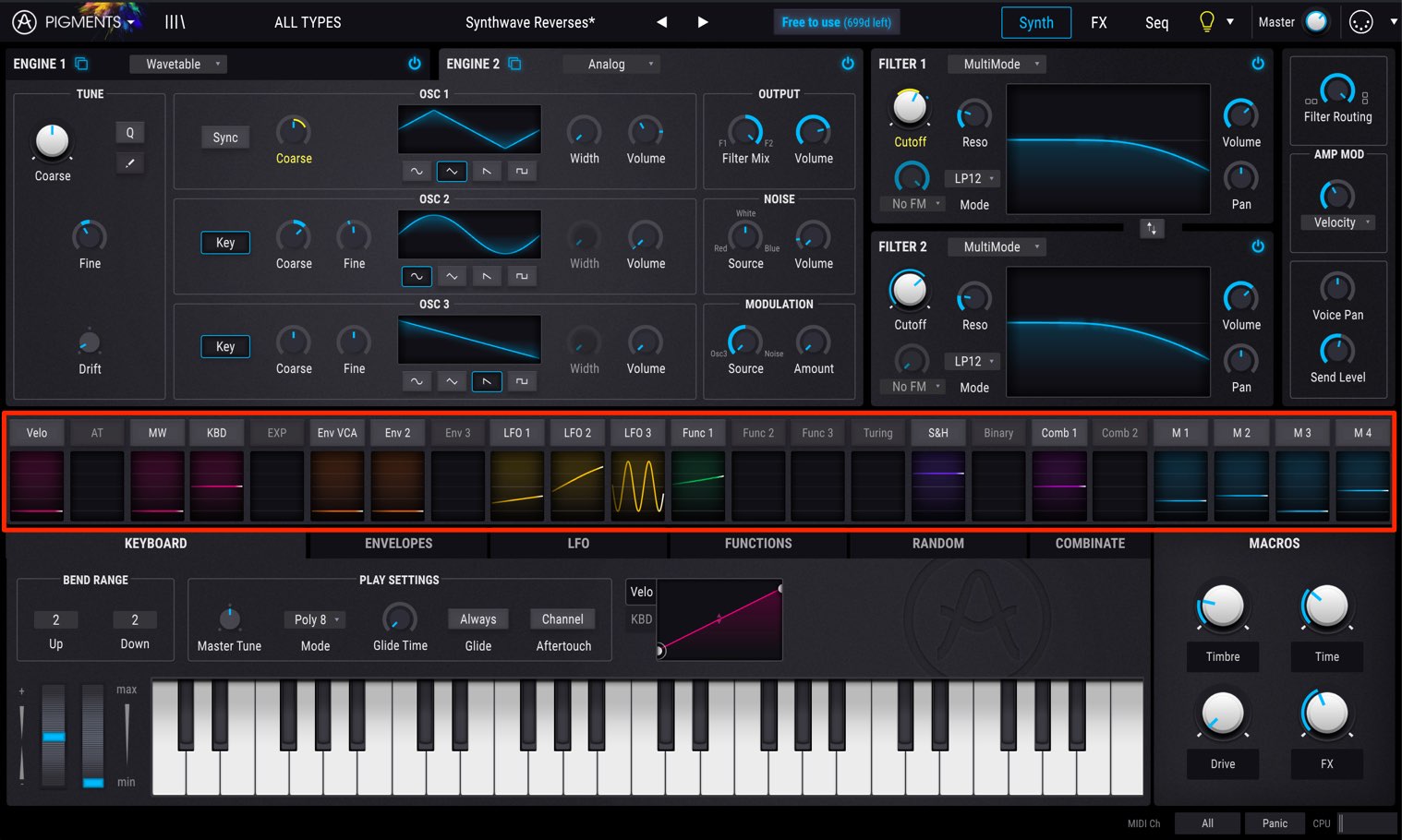
モジュレーション状態を1画面の中で把握できるように設計されており、複雑なサウンドエディットも非常に行いやすくなっています。
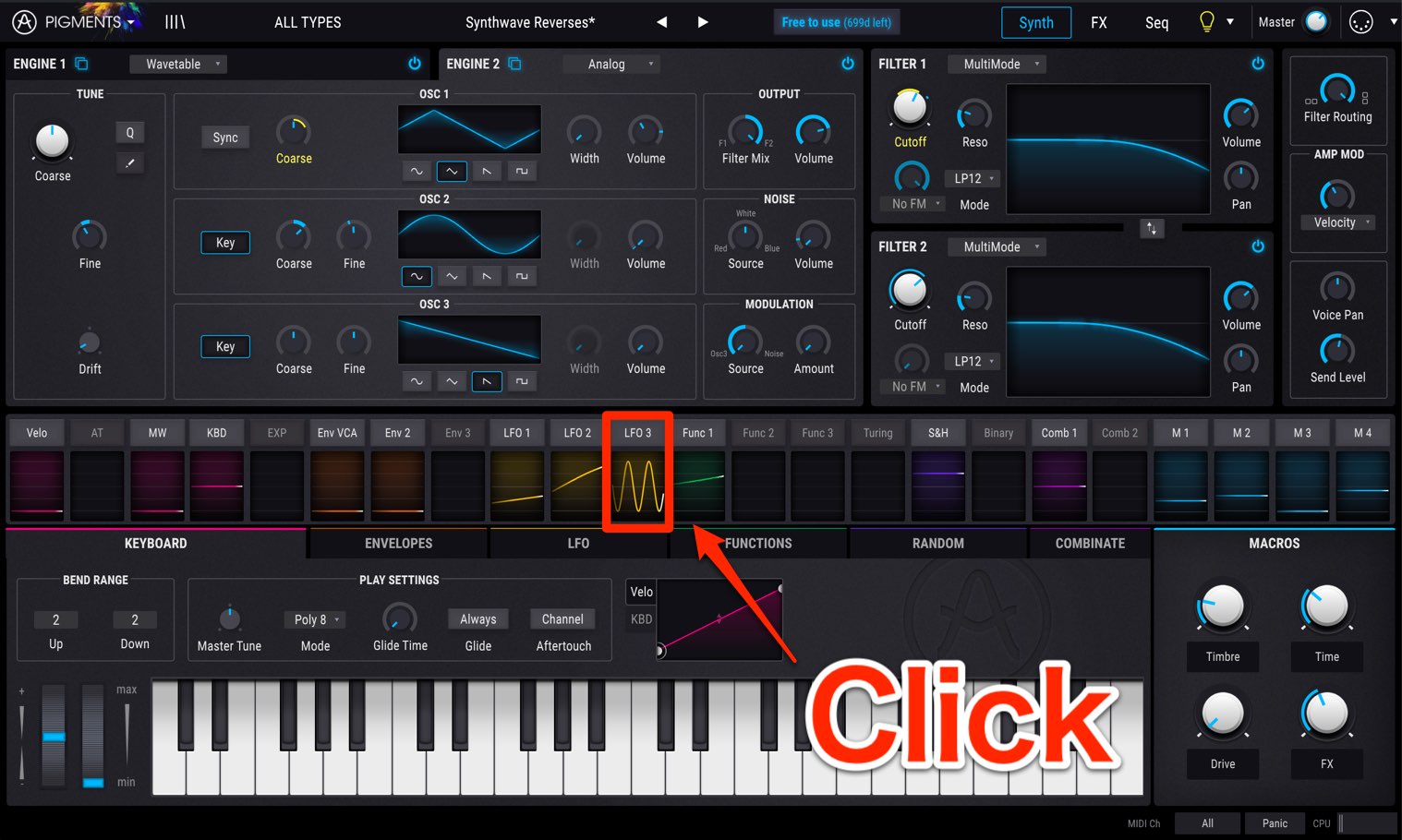
目的のモジュレーションを各パラメーターへ適用する場合、モジュレーションソースをクリックし選択します。
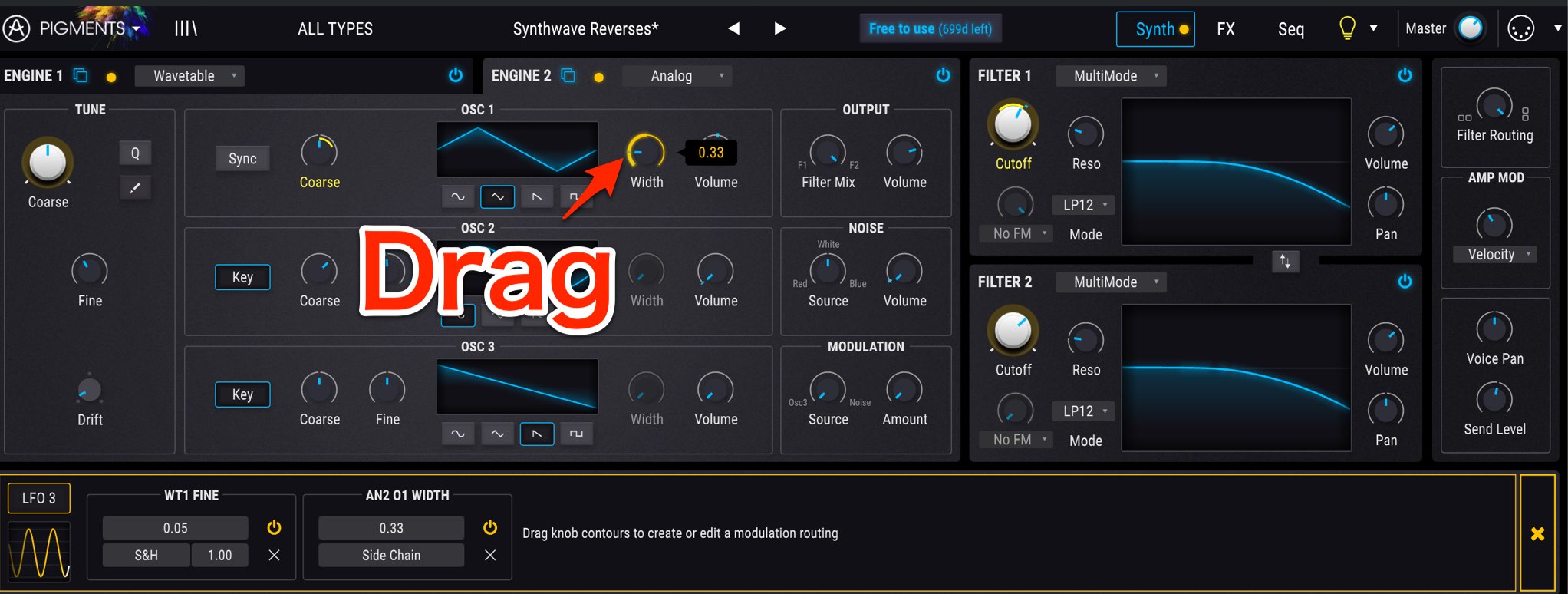
次にモジュレーションを適用するノブの外周をドラッグするだけです。
アマウント量も調整可能で、モジュレーションの動きはグラフィカルに変化します。
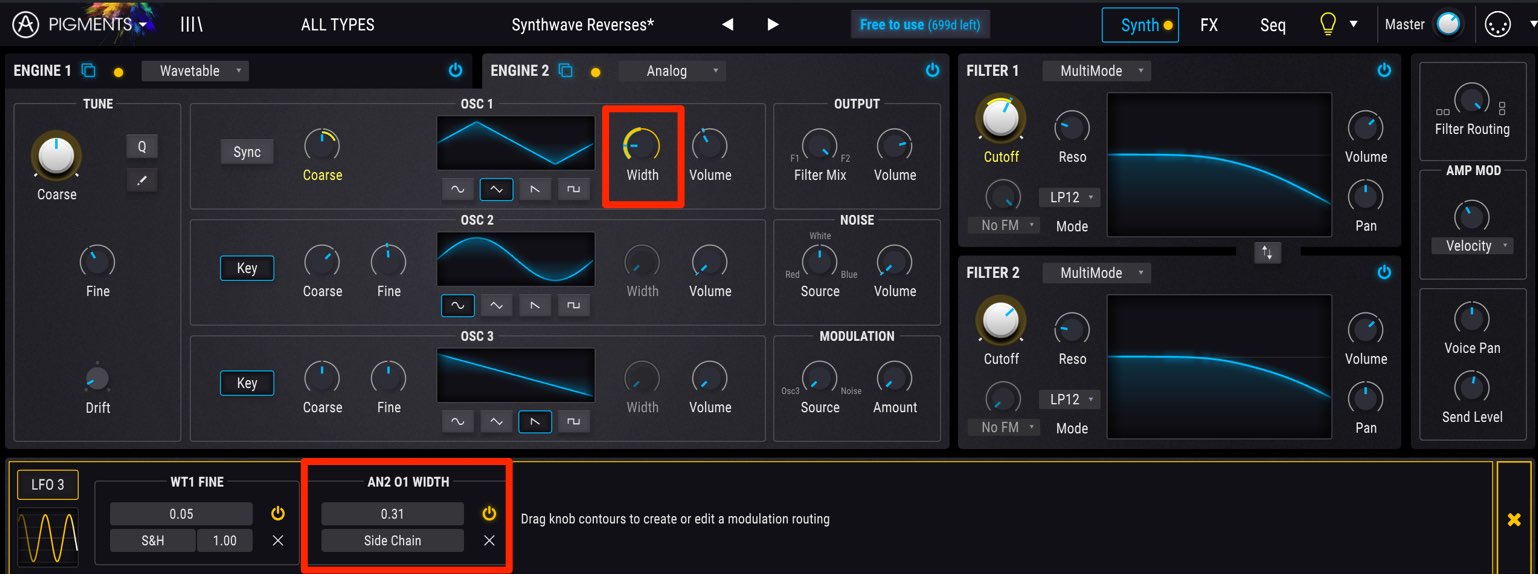
このように、各モジュレーション上には、割り当てを行った全パラメーターが表示されます。
多種多様なフィルターセクション
フィルターセクションには、2機のフィルターが用意されています。
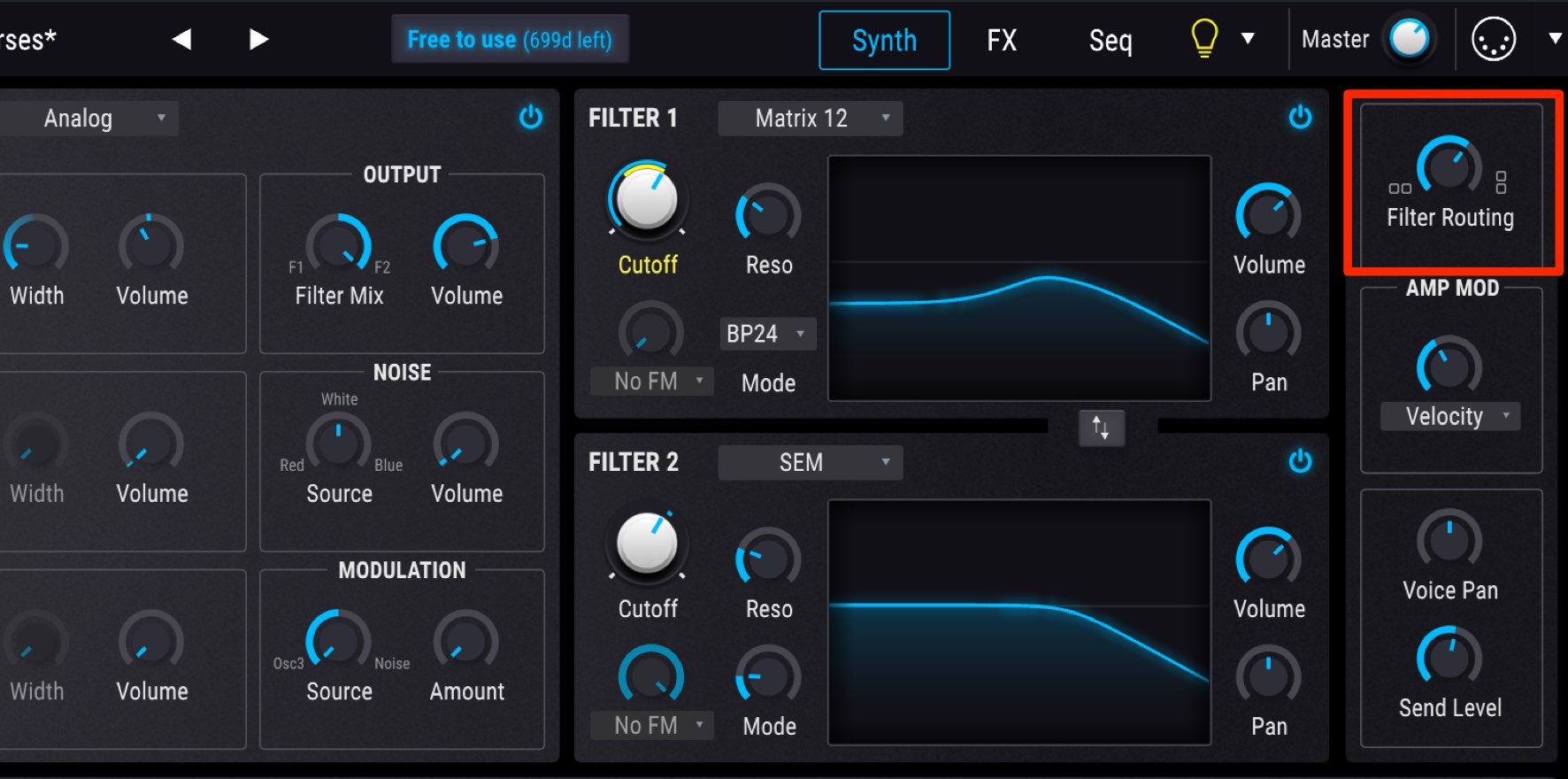
これらフィルターの直列/並列接続を設定することが可能です。
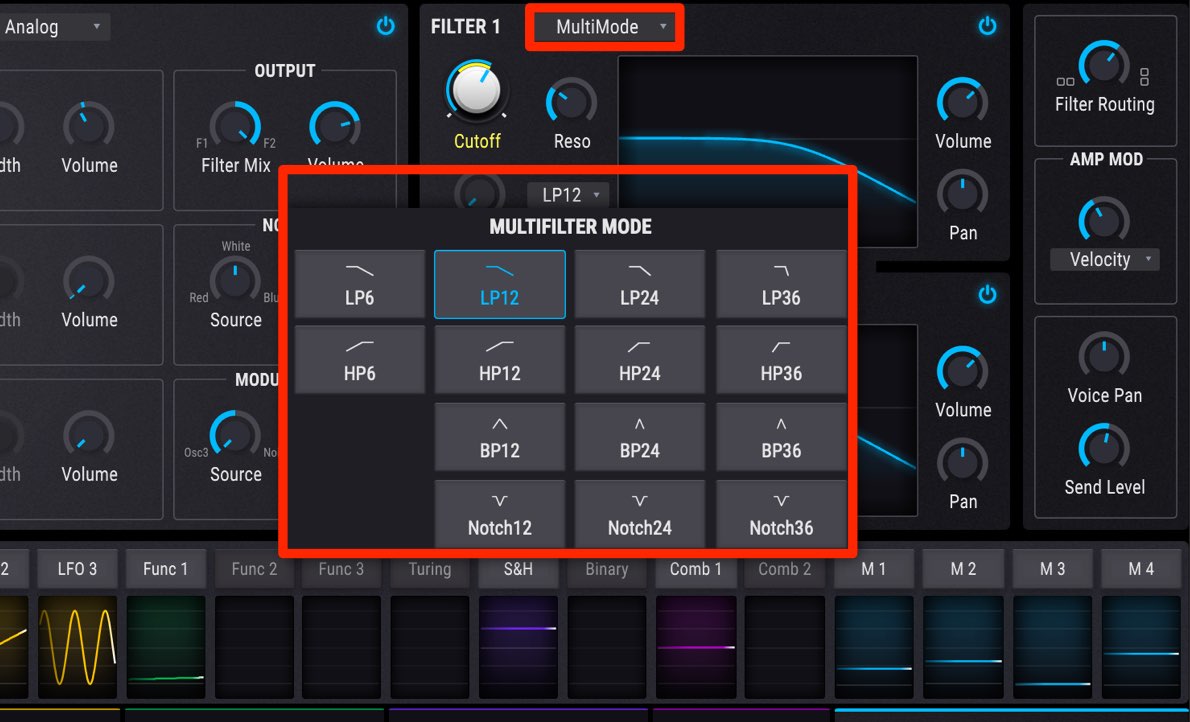
フィルタータイプも標準的なローパス/ハイパスが行える「MultiMode」
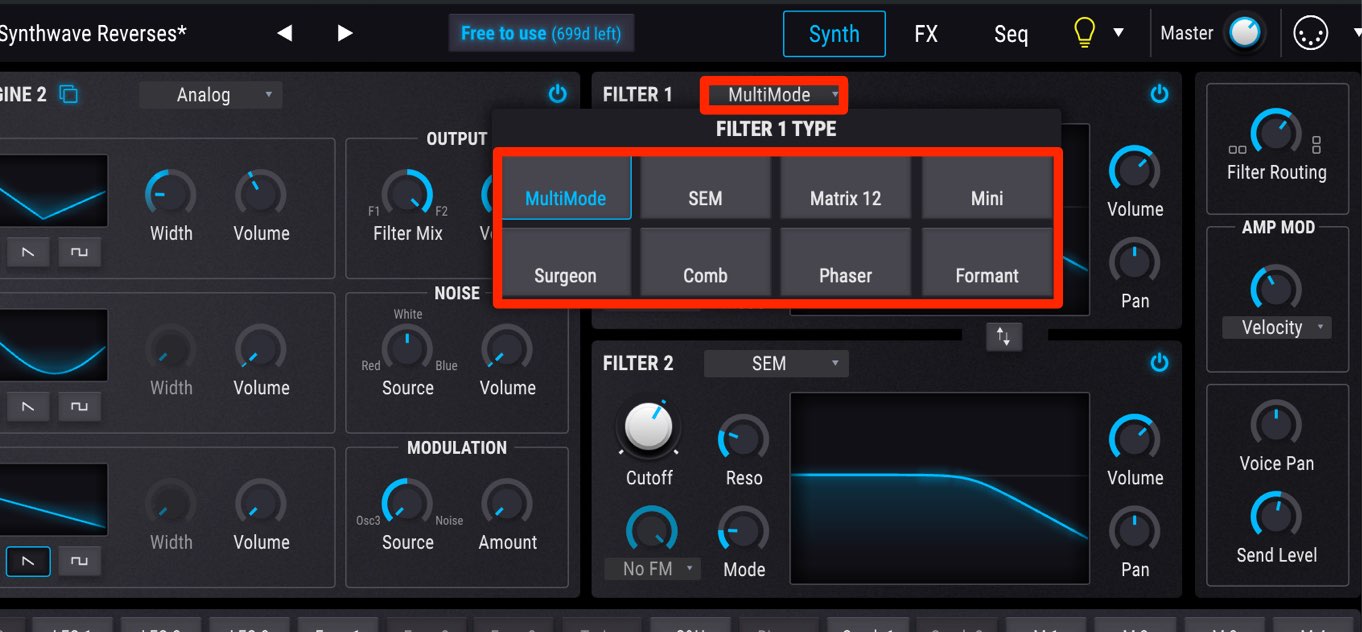
「SEM」「Mini Moiog」など、ビンテージシンセがシミュレートされたフィルター。
「Comb」や、「フォルマントシフター」などの特殊な項目も用意されており、個性的で幅広いサウンドを生み出すことが可能です。
DAWと同期しリズムを作り出すファンクションジェネレーター
次に「ファンクションジェネレーター」を確認していきます。

当機能はエンベロープ/LFOの両特徴を備えたセクションとなっており、PlayModeから役割を切り替えることができます。
- One : トリガーを受けると1回だけ再生(ワンショット)
- 1度トリガーされると次のトリガーを受けるまでループ
- 常時動作(すべてのトリガーを無視)

クリックで自由にポイントを追加し、好みのカーブを作成していきます。
各ポイントで結ばれたカーブの傾斜も細かく設定可能です。

ポイントをDAWのテンポに同期することもできるため、リズミカルなモジュレーション効果を作成する際にも重宝します。
シンセフレーズを自動生成するシーケンス/アルペジエーター
Pigmentsはシンセサイザー定番の「シーケンサー」「アルペジエーター」も搭載されています。

シーケンサーセクションは入力したノート信号からフレーズパターンを作成する機能です。
最大16ステップを使用して1つのパターンフレーズを構築します。
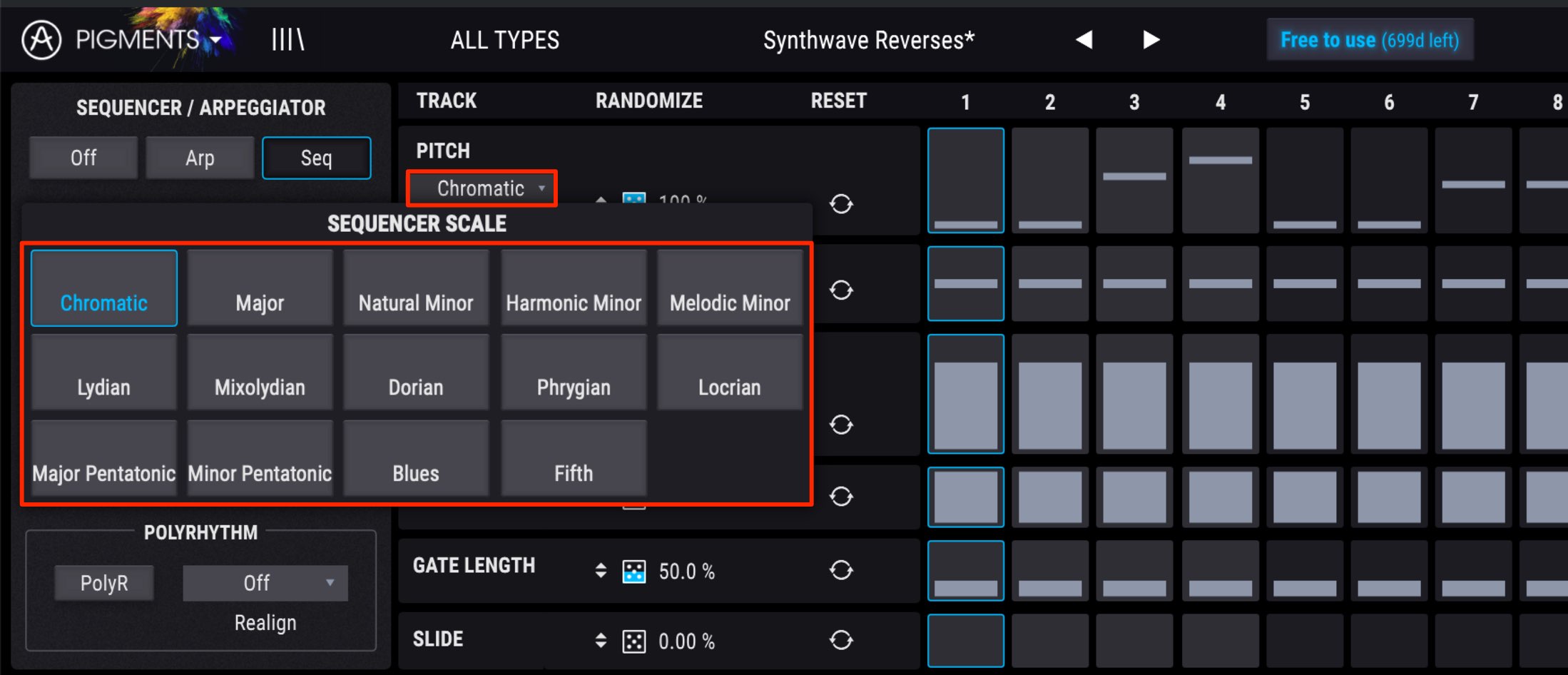
「PITCH」部分からスケールの指定も行えます。
例えば「Natural Minor」に設定すると、演奏したノートをルートとしたナチュラルマイナーフレーズが演奏されます。
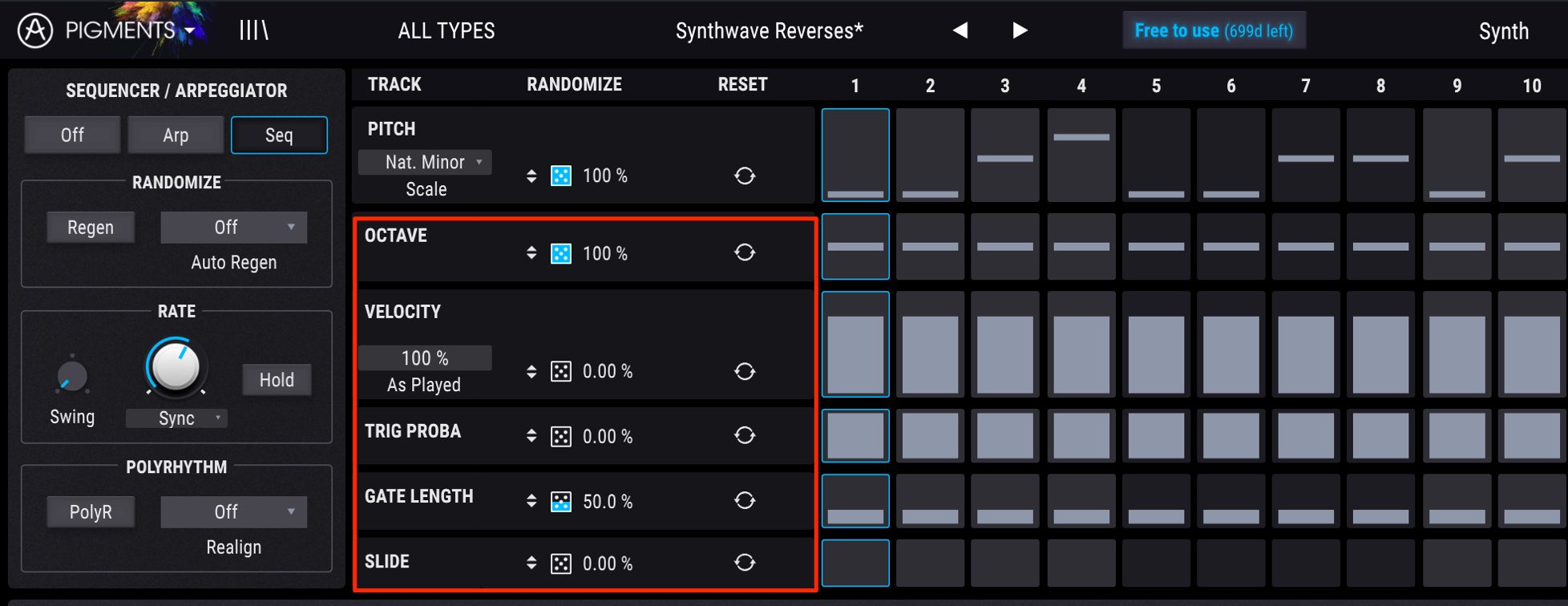
「PITCH」に加えて、ステップごとの「OCTAVE」「VELOCITY」「GATE LENGTH」「SLIDE」などの設定を行うことができます。
この中でもユニークな機能として挙げられるのが「TRIG PROBA」です。

当機能はステップを発音させる確率をコントロールする機能で、例えば値を50%とした際には2ループに1回の割合でノートが発音されます。
ループされたフレーズにバリエーションが生まれ、マンネリ化を防ぐという効果を期待できます。
エフェクトセクション
最後にエフェクトセクションを確認していきましょう。

エフェクトは、「Bus A」「Bus B」「Send Bus」という3つのグループで構成されており、各セクションに最大で3エフェクトを立ち上げることができます。
またBusA/Bはアウトプットボリュームを個別でコントロール可能です。
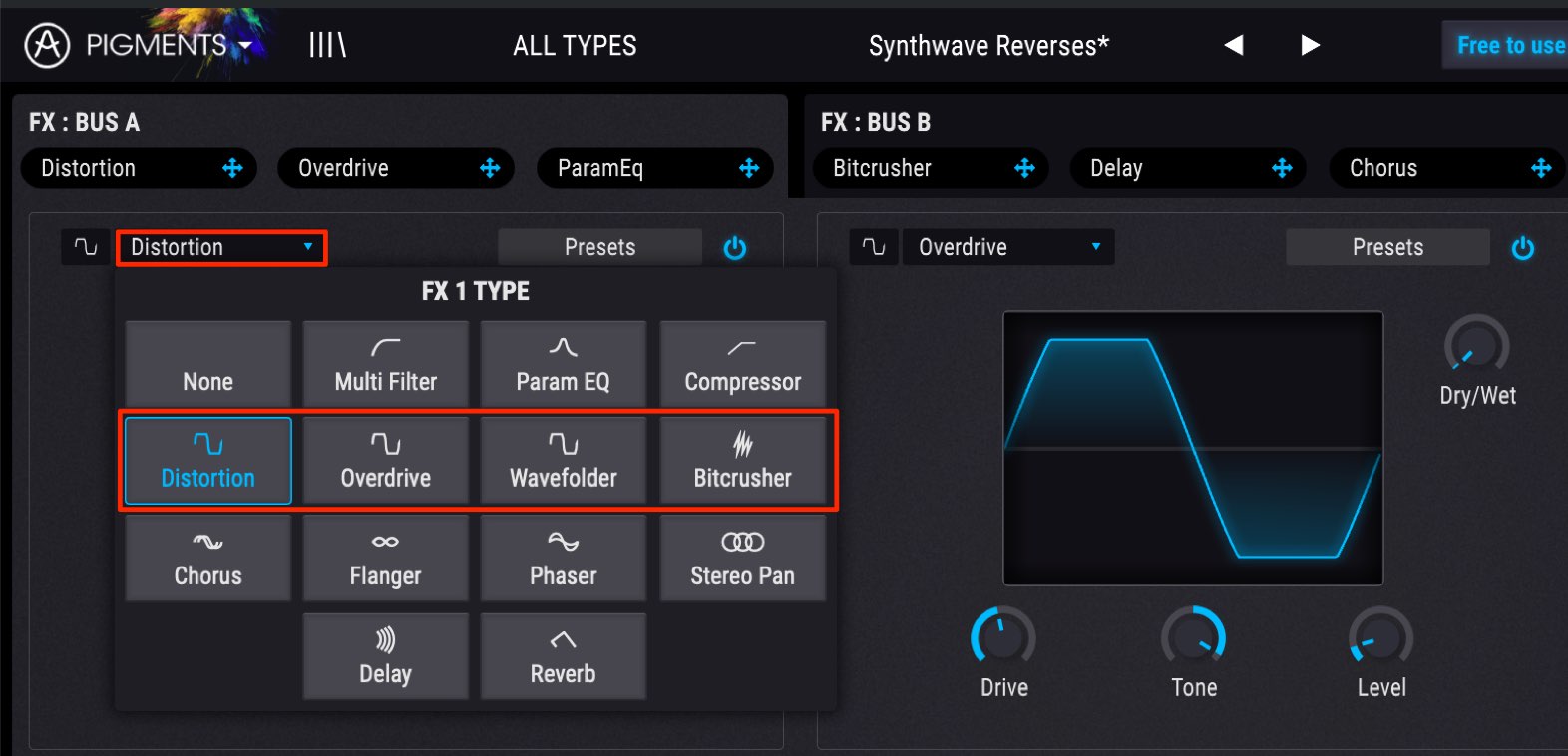
スタンダードなエフェクトはもちろん、「Overdrive」「Distortion」「Wavefolder」「Bitcrusher」と歪み系も豊富に用意されているため、現代的なサウンドメイキングも積極的に行うことができます。
いかがでしたでしょうか?
PIGMENTSはウェーブテーブルシンセという部類では、比較的後発の製品となります。
しかし、それゆえに隙がなく、幅広いユーザーのニーズに応えられる優れた製品と感じました。
デモ版も用意されていますので、この機会に是非お試しください。
ARTURIA社による初のオリジナル・ソフトウェア・シンセサイザー🎹「PIGMENTS」の解説✨
ヴァーチャルアナログとウェーブテーブル・シンセシスを融合した製品です。
動画ではPIGMENTSを使用したデモソングを確認できます🎵
詳細:https://t.co/4RxrFNgZDv⁰
解説はSleepfreaks講師:宮川智希 @l75_3 pic.twitter.com/tKgrHAevbn— SLEEP FREAKS (@SLEEPFREAKS_DTM) 2019年2月28日
記事の担当 宮川 智希/Tomoki Miyakawa
